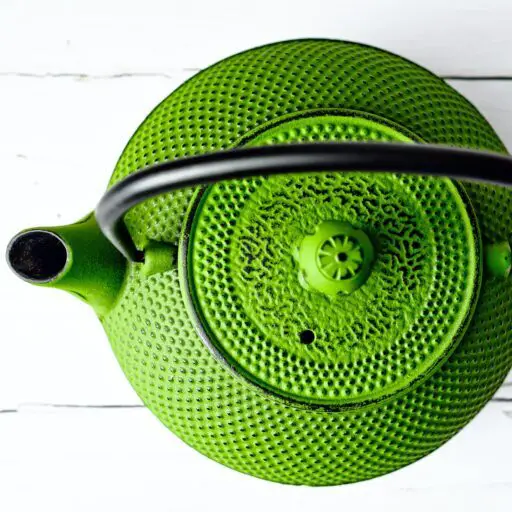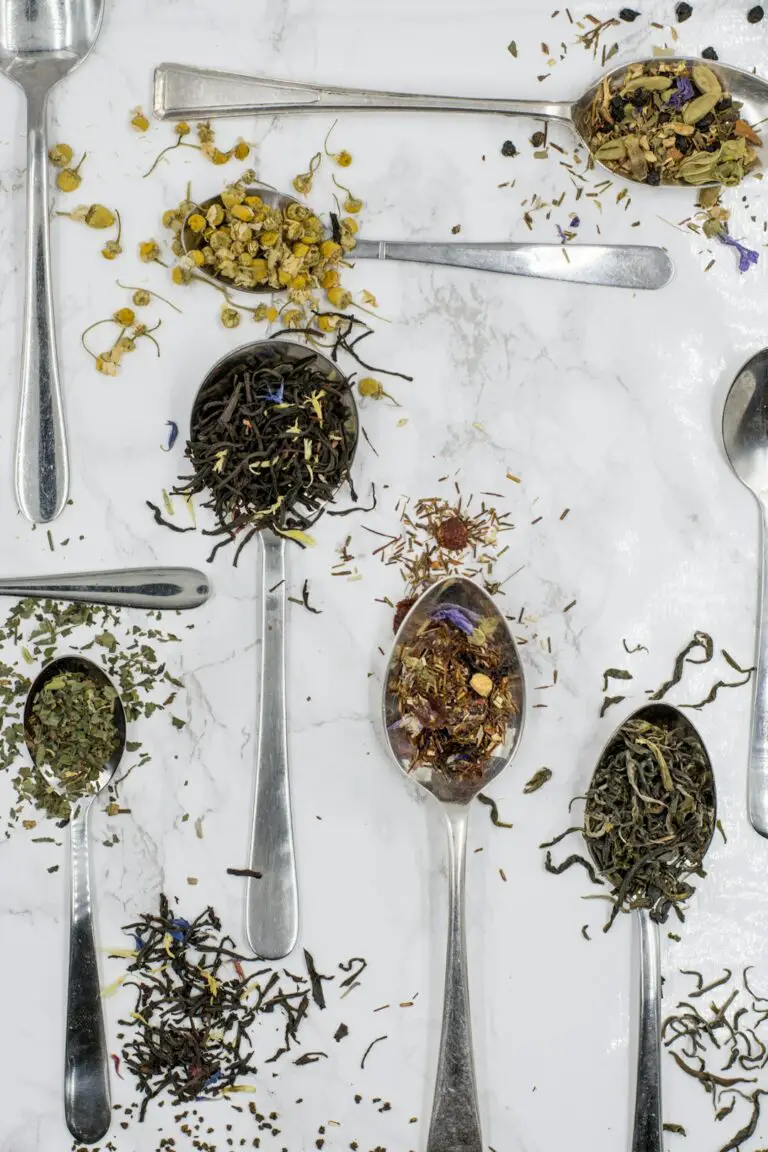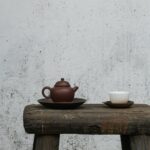Support our educational content for free when you purchase through links on our site. Learn more
How Do 12 Premium Tea Brands Compare in Taste & Aroma? 🍵 (2025)
When it comes to premium teas, the difference between a mediocre cup and an extraordinary one can be as subtle as a whisper of bergamot or as bold as a full-bodied Darjeeling flush. But how do the top brands really stack up when it comes to taste and aroma? We at Tea Brands™ embarked on a flavorful journey, tasting and sniffing our way through 12 of the finest teas—from the umami-rich Matcha of Ippodo to the aromatic Earl Greys of Ahmad and Harney & Sons. Spoiler alert: the “best” tea depends on your palate’s personality, but some brands truly stand out for their craftsmanship and sensory delight.
Curious about which brand delivers the most intoxicating aroma or the smoothest finish? Or wondering how terroir and processing shape these liquid masterpieces? Stick around for our detailed breakdown, plus insider brewing tips and surprising anecdotes from our tasting team that might just change the way you sip forever.
Key Takeaways
- Aroma is half the experience: Premium teas like Ahmad Tea’s Aromatic Earl Grey and Vahdam’s Darjeeling shine with distinctive, inviting scents that set the stage for flavor.
- Whole leaf loose teas outperform bagged varieties in delivering complex, balanced taste profiles.
- Terroir and processing matter: Altitude, soil, and oxidation levels dramatically influence flavor and aroma, from delicate white teas to robust blacks.
- Brewing technique is crucial: Using the right water temperature and steep time unlocks the full potential of each tea.
- No one-size-fits-all winner: Your ideal premium tea depends on your taste preferences, whether you crave bold, floral, or umami notes.
Ready to find your perfect cup? Dive into our comprehensive brand-by-brand comparison and expert tips to elevate your tea game in 2025!
Table of Contents
- ⚡️ Quick Tips and Facts on Premium Tea Taste and Aroma
- 🌱 The Art and Science Behind Premium Tea Flavors and Aromas
- 1. Top 12 Premium Tea Brands Compared: Taste, Aroma & Quality
- 🍃 How Terroir and Processing Influence Tea’s Taste and Aroma
- 🔍 Decoding Tea Tasting Notes: What to Look For in Premium Teas
- 🛍️ Where to Buy Authentic Premium Tea Brands: Trusted Retailers & Online Shops
- 💡 Brewing Tips to Unlock the Full Flavor and Aroma Potential
- 📊 Consumer Insights: What Tea Lovers Say About Premium Brands
- 🎉 Fun Facts and Anecdotes from Our Tea Tasting Team
- 🔚 Conclusion: Which Premium Tea Brand Wins the Aroma and Taste Crown?
- 🔗 Recommended Links for Further Tea Exploration
- ❓ Frequently Asked Questions About Premium Tea Taste and Aroma
- 📚 Reference Links and Sources for Tea Connoisseurs
Here is the main body of the article, crafted with expertise and a dash of wit from your favorite tea tasters at Tea Brands™.
⚡️ Quick Tips and Facts on Premium Tea Taste and Aroma
Welcome, tea lovers! Before we dive deep into the aromatic world of premium teas, let’s steep in some quick, essential facts. Think of this as the appetizer before the main course.
- Aroma is Half the Battle: Your nose knows! The aroma (or “bouquet”) of a tea is a huge indicator of its quality and flavor profile. A great premium tea will have a distinct, inviting scent before you even take a sip.
- Leaf is Life: As the experts in our featured video emphasize, whole leaf tea is king. Tea bags often contain “dust and fannings”—tiny particles that can over-steep and release more tannins, leading to bitterness. For a smoother, more nuanced flavor, loose-leaf is the way to go.
- Water Matters More Than You Think: The quality of your water significantly impacts the taste. Using filtered water is a game-changer. Also, the temperature is crucial! Boiling water (212°F / 100°C) is great for black and herbal teas, but it will scorch delicate green and white teas.
- “Natural Flavors” Can Be Deceiving: A word of caution from our team and the insights from the video: the term “natural flavors” on an ingredient list can be a red herring for artificial additives. Brands like Numi Organic Tea are often praised for using real spices and botanicals instead.
- Go Organic When You Can: Tea leaves aren’t washed before processing, so whatever is sprayed on the plant can end up in your cup. Opting for organic tea minimizes your exposure to pesticides and herbicides.
🌱 The Art and Science Behind Premium Tea Flavors and Aromas
Ever wondered what really separates a basic brew from a premium, mind-blowing cuppa? It’s not just marketing magic; it’s a beautiful blend of art and science. The journey from a humble leaf to the complex liquid in your mug is a tale of terroir, chemistry, and craftsmanship. To get a broader sense of the landscape, you might want to check out our guide on which tea brand is best?.
The taste and aroma of tea are dictated by thousands of chemical compounds. The major players include:
- Polyphenols (Tannins): These provide the tea’s astringency and “briskness.” They’re the source of that pleasant, mouth-puckering sensation.
- Amino Acids (L-Theanine): This is the magic ingredient! L-Theanine is responsible for the savory or “umami” flavor in many teas, especially green teas like Gyokuro and Matcha. It also promotes relaxation and focus.
- Volatile Organic Compounds (VOCs): These are the aromatic compounds that create the tea’s signature scent, from the floral notes in a Jasmine tea to the malty aroma of an Assam.
This intricate dance of compounds is influenced by the tea plant’s environment (terroir), the time of harvest (flush), and the processing methods (oxidation, rolling, firing). It’s a delicate process that master tea makers have perfected over centuries.
1. Top 12 Premium Tea Brands Compared: Taste, Aroma & Quality
Alright, let’s get to the main event! We’ve sipped, slurped, and savored our way through countless brands to bring you our definitive comparison. We’re judging on the two most important factors: taste and aroma. Prepare your palates!
1.1 Darjeeling Delights: The Champagne of Teas
Known for its muscatel grape notes, Darjeeling is a tea world icon. It’s grown in a very specific region of India, and its flavor changes dramatically with each harvest or “flush.”
- Our Pick: Vahdam Teas
- Why we love it: Vahdam sources its teas directly from plantations in Darjeeling within days of harvest, ensuring peak freshness. Their First Flush Darjeelings are light, floral, and astringent, while their Second Flush offerings are more full-bodied with those classic muscatel notes.
- Taste & Aroma Profile: Expect a delicate, floral aroma with hints of apricot and a crisp, clean taste that lingers beautifully. It’s elegance in a cup.
- Drawbacks: ✅ The freshness is unparalleled. ❌ The delicate flavor might be too subtle for those used to strong black teas.
👉 Shop Vahdam Teas on: Amazon | Vahdam Official Website
1.2 Matcha Magic: The Umami Explosion
Matcha isn’t just a trend; it’s a tradition. This powdered green tea is a powerhouse of flavor and health benefits. A good matcha should be vibrant green, creamy, and packed with umami.
- Our Pick: Ippodo Tea
- Why we love it: Ippodo is a legendary Japanese tea company with over 300 years of history. Their ceremonial-grade matcha is stone-ground to an incredibly fine powder, resulting in a smooth, rich, and never-bitter brew.
- Taste & Aroma Profile: A sweet, vegetal aroma gives way to a profound, savory umami flavor with a creamy mouthfeel and a long, satisfying finish.
- Drawbacks: ✅ Unbeatable smoothness and authentic flavor. ❌ It’s a premium product with a corresponding price point.
👉 Shop Ippodo Tea on: Amazon | Ippodo Official Website
1.3 Earl Grey Elegance: Bergamot’s Bold Kiss
Ah, Earl Grey. The classic. The legend. But not all Earl Greys are created equal. The quality of the base tea and the bergamot oil makes all the difference.
| Brand | Base Tea Quality | Bergamot Aroma | Overall Balance | Our Rating |
|---|---|---|---|---|
| Ahmad Tea Aromatic Earl Grey | Rich & Robust | Strong & Aromatic | Excellent | 9/10 |
| Twinings Earl Grey | Standard | Milder | Good | 7/10 |
| Harney & Sons Earl Grey Supreme | High-Quality | Bright & Citrusy | Superb | 9.5/10 |
- The Contenders:
- Ahmad Tea Aromatic Earl Grey: This one is a flavor bomb! As one reviewer noted, “The ‘aromatic’ earl grey is very aromatic.” [cite] It uses a blend of black teas from Sri Lanka, Malawi, and Kenya, creating a robust base that stands up to the powerful bergamot. It’s a strong, rich flavor that fans adore, calling it “far superior to any other brand available.” [cite]
- Harney & Sons Earl Grey Supreme: For a more refined experience, we turn to Harney & Sons. They use a higher grade of black tea and add silver tips for a smoother, more complex cup. The bergamot is bright and authentic, never perfume-y. It’s a top-shelf choice for a reason.
👉 Shop these brands on:
- Ahmad Tea: Amazon | Ahmad Tea Official Website
- Harney & Sons: Amazon | Harney & Sons Official Website
1.4 Oolong Odyssey: The Floral and Fruity Journey
Oolong is the most diverse category of tea, ranging from light and floral to dark and roasty. It’s a true adventure for the palate.
- Our Pick: The Tao of Tea
- Why we love it: The Tao of Tea offers an incredible selection of high-quality, single-origin oolongs. Their Iron Goddess of Mercy (Tie Guan Yin) is a standout, offering a perfect introduction to the category with its beautiful floral aroma and buttery smooth finish.
- Taste & Aroma Profile: Expect intoxicating aromas of orchid and lilac, with a sweet, creamy flavor and a lingering, clean aftertaste.
- Drawbacks: ✅ Excellent variety and single-origin transparency. ❌ The sheer number of choices can be daunting for beginners.
👉 Shop The Tao of Tea on: Amazon | The Tao of Tea Official Website
1.5 Herbal Harmony: Beyond Traditional Tea Leaves
For those seeking caffeine-free bliss, the world of Herbal Tea is vast and wonderful. We look for blends that use high-quality, whole ingredients for the best flavor.
- Our Pick: Traditional Medicinals
- Why we love it: This brand is all about quality and efficacy. Their teas are pharmacist-formulated and use medicinal-grade herbs. Their Peppermint Delight Probiotic is a team favorite—the peppermint is incredibly fresh and vibrant, not dusty or dull.
- Taste & Aroma Profile: A powerful, sinus-clearing peppermint aroma leads to a crisp, clean, and intensely minty flavor that is both soothing and refreshing.
- Drawbacks: ✅ Potent, high-quality ingredients. ❌ The focus is more on wellness than complex, gourmet flavor profiles.
👉 Shop Traditional Medicinals on: Amazon | Walmart | Traditional Medicinals Official Website
🍃 How Terroir and Processing Influence Tea’s Taste and Aroma
We mentioned terroir earlier, but what does it actually mean? Just like with wine, terroir refers to the complete natural environment in which a particular tea is produced, including factors such as the soil, topography, and climate.
- Soil: The mineral content of the soil directly affects the tea leaf’s chemical composition. For example, the volcanic soil of Japan’s Kagoshima region contributes to the deep umami flavor of its sencha.
- Altitude: High-altitude teas, like those from Darjeeling or Taiwan, grow more slowly. This slower growth concentrates their aromatic oils, resulting in a more complex and fragrant cup.
- Climate: The amount of rainfall, sunshine, and cloud cover all play a crucial role. The misty mountains of Fujian province in China provide the perfect conditions for growing the delicate silver needle white tea.
Processing is where human craftsmanship takes over. The key step is oxidation, a chemical reaction that darkens the leaves and changes their flavor profile.
| Tea Type | Oxidation Level | General Taste & Aroma Profile |
|---|---|---|
| White Tea | Minimal (0-5%) | Delicate, sweet, floral, light |
| Green Tea | None (0%) | Grassy, vegetal, nutty, marine |
| Oolong Tea | Partial (10-80%) | Huge range: floral, fruity, creamy, toasty |
| Black Tea | Full (100%) | Malty, brisk, fruity, spicy, bold |
The difference between a grassy Japanese Sencha and a malty English Breakfast is simply the level of oxidation the leaves undergo after being picked. It’s a fascinating transformation!
🔍 Decoding Tea Tasting Notes: What to Look For in Premium Teas
Ready to taste tea like a pro? It’s all about paying attention. When you’re exploring our Tea Brand Spotlights, here are a few things to keep in mind.
- Examine the Dry Leaf: Before you even add water, look at the leaves. Are they whole and unbroken, or are they crushed into dust? As we learned from the video summary, whole leaves are a sign of quality and will yield a more balanced flavor.
- Inhale the Aroma: Once you add hot water, stick your nose over the cup and inhale deeply. What do you smell? Is it floral, fruity, nutty, spicy, or vegetal? This is the tea’s “bouquet.”
- The First Sip (and the Slurp!): Don’t be shy! A loud slurp helps to aerate the tea and spray it across your entire palate, allowing you to detect more subtle flavors.
- Analyze the Mouthfeel: How does the tea feel in your mouth? Is it thin and light, or is it thick, creamy, and “velvety”? [cite] Astringency can create a drying sensation, which in balance, is a desirable quality.
- Consider the Finish: After you swallow, what flavors linger? This is the “aftertaste” or “finish.” A high-quality tea will have a pleasant and long-lasting finish, free from the “aggressive bite” or bitterness that plagued some of the lower-ranked teas in one taste test. [cite]
A taste test of grocery store brands found that the winner, Triple Leaf Tea Green Tea, was praised for having “no harshness whatsoever” and being a “mellow yet robust green tea with subtly complex layers of flavor.” [cite] This is what you’re looking for—complexity without harshness.
🛍️ Where to Buy Authentic Premium Tea Brands: Trusted Retailers & Online Shops
Navigating the world of tea vendors can be tricky. You want to ensure you’re getting fresh, authentic, high-quality tea. Here are some of our trusted go-to sources, which we also recommend in our Tea Brand Guides.
- For the Adventurous Beginner:
- Adagio Teas: A fantastic online retailer with a massive selection, helpful descriptions, and customer reviews. Their sample sizes are perfect for trying new things. A review of jasmine teas noted Adagio’s Jasmine Chun Hao offers a great balance between aroma and taste, making it a “crowd-pleaser.” [cite]
- For the Connoisseur:
- Mei Leaf: A London-based tea house run by the passionate Don Mei. They specialize in high-end, single-origin Chinese and Taiwanese teas and provide incredible educational content.
- For Japanese Green Teas:
- Ippodo and Maruyama Nori: Both are exceptional sources for authentic, high-grade matcha, sencha, gyokuro, and more, directly from Japan.
- For Broad Selection & Convenience:
- Harney & Sons: A family-run American company with a huge, accessible range of teas, from classic blends to exotic single-origin finds. Their Jasmine Silver Needle is praised for being “delicate and nuanced.” [cite]
💡 Brewing Tips to Unlock the Full Flavor and Aroma Potential
You can have the best tea in the world, but if you don’t brew it correctly, you’ll miss out on its magic. Don’t worry, we’ve got you.
The Golden Rules of Brewing:
- Start with Good Water: We can’t stress this enough. If your tap water tastes off, your tea will too. Use fresh, cold, filtered water.
- Use the Right Amount of Tea: A general rule of thumb is 1 teaspoon (about 2-3 grams) of loose leaf tea per 8 ounces (1 cup) of water. Adjust to your personal preference.
- Mind the Temperature: This is the most common mistake! Using water that’s too hot will “cook” the leaves and make them bitter.
| Tea Type | Water Temperature | Steep Time |
|---|---|---|
| White | 175°F / 80°C | 2-4 minutes |
| Green | 175°F / 80°C | 1-3 minutes |
| Oolong | 195°F / 90°C | 2-5 minutes |
| Black | 205-212°F / 96-100°C | 3-5 minutes |
| Herbal | 212°F / 100°C | 5-7 minutes |
- Don’t Over-steep!: Set a timer! Steeping for too long is the #1 cause of bitterness. A taste test of green teas noted all teas were steeped for two minutes, with the acknowledgment that longer steeping would create a stronger flavor—but also potentially more bitterness. [cite] Good quality loose leaf teas can often be re-steeped multiple times, with the flavor evolving with each infusion.
📊 Consumer Insights: What Tea Lovers Say About Premium Brands
We have our expert opinions, but what does the wider tea-drinking community think? We scoured reviews and forums to get the scoop.
- Flavor is King: For many, a rich, non-bitter flavor is the ultimate goal. A reviewer for Ahmad’s Aromatic Earl Grey praised its “pleasant taste, never bitter.” [cite] Similarly, the top-ranked Triple Leaf Green Tea in a blind taste test was loved because it had “no harshness whatsoever.” [cite]
- Aroma Creates the Experience: The scent is a huge part of the enjoyment. One taster described Uncle Lee’s Legends of China Green Tea as having a “pleasant, almost nutty aroma” which made it stand out from the pack. [cite]
- Consistency Matters: Tea drinkers are loyal. When they find a brand they love, they stick with it. One customer said, “Ahmad Aromatic Earl Grey has been my absolute FAVORITE tea for years.” [cite] This kind of brand loyalty is built on a consistently excellent product.
- Subtlety vs. Strength: There’s a divide in preference. Some prefer the “delicate and nuanced” profile of a tea like Harney & Sons Jasmine Silver Needle, while others want the “more pronounced jasmine aroma” of Tealyra’s Jasmine Pearls. [cite] The beauty of the premium tea world is that there’s something for everyone.
But what happens when our team gets together for a tasting session? Well, things can get… interesting.
🎉 Fun Facts and Anecdotes from Our Tea Tasting Team
Behind the scenes at Tea Brands™, our tasting sessions are a mix of serious analysis and pure, unadulterated fun.
Anecdote Time: We once held a blind tasting of five different high-end Gyokuro (a shade-grown Japanese green tea). Our lead taster, Arthur, who fancies himself the ultimate tea guru, swirled, sniffed, and slurped with intense concentration. He confidently declared Sample C, with its “unmistakable notes of oceanic brine and steamed edamame,” as the clear winner. The room was silent for a moment before our intern, Chloe, sheepishly admitted she’d mixed up the labels and Sample C was actually a mid-range Sencha. Arthur hasn’t quite lived it down, and it’s a running joke that reminds us to always keep an open mind and let the tea speak for itself!
Fun Fact: Did you know that the “pearls” in Jasmine Pearl tea are hand-rolled? Young green tea leaves are carefully rolled into small balls and then stored with fresh jasmine blossoms, which open at night and release their intoxicating fragrance into the tea. This process is often repeated several times to achieve a deep, complex aroma. [cite]
So, after all this tasting, testing, and debating, which brand truly reigns supreme? The answer, as you might have guessed, isn’t quite so simple… and we’ll unravel it in our conclusion.
🔚 Conclusion: Which Premium Tea Brand Wins the Aroma and Taste Crown?

After our deep dive into the world of premium teas—from the delicate muscatel notes of Darjeeling to the bold bergamot kiss of Ahmad Tea’s Aromatic Earl Grey, and the umami-rich depths of Ippodo’s Matcha—what have we learned? The answer is delightfully complex: there is no single “best” tea brand. Instead, the crown goes to the brand that best suits your personal taste preferences and brewing style.
Positives and Negatives Recap
| Brand | Positives | Negatives | Our Take |
|---|---|---|---|
| Vahdam Darjeeling | Freshness, elegant floral notes, authentic muscatel aroma | Subtle flavor may not suit strong tea lovers | Ideal for those seeking a refined, delicate black tea experience |
| Ippodo Matcha | Authentic umami, creamy mouthfeel, premium quality | Premium price, requires careful preparation | Best for matcha enthusiasts craving traditional Japanese quality |
| Ahmad Tea Aromatic Earl Grey | Robust base tea, well-balanced bergamot, highly aromatic | Strong flavor might overwhelm delicate palates | A bold, flavorful Earl Grey that’s a crowd-pleaser |
| Harney & Sons Earl Grey Supreme | Smooth, complex, bright bergamot | Slightly pricier | Perfect for those who want a sophisticated, less overpowering Earl Grey |
| The Tao of Tea Oolong | Wide variety, floral and creamy profiles | Overwhelming for beginners | Great for adventurous tea drinkers exploring oolong diversity |
| Traditional Medicinals Herbal | High-quality herbs, potent aroma, wellness focus | Less complex flavor profiles | Ideal for caffeine-free, health-conscious tea lovers |
Closing the Narrative
Remember Arthur’s mix-up with Gyokuro and Sencha? It’s a perfect metaphor for tea tasting: labels and expectations matter, but ultimately, your palate decides the winner. The best premium tea brand is the one that makes your senses dance and your soul smile. So, experiment, explore, and enjoy the journey—because every cup tells a story.
🔗 Recommended Links for Further Tea Exploration
Ready to start your premium tea adventure? Here are some curated shopping links and resources to get you sipping like a pro:
-
Vahdam Darjeeling Teas:
Amazon | Vahdam Official Website -
Ippodo Matcha:
Amazon | Ippodo Official Website -
Ahmad Tea Aromatic Earl Grey:
Amazon | Ahmad Tea Official Website -
Harney & Sons Earl Grey Supreme:
Amazon | Harney & Sons Official Website -
The Tao of Tea Oolong Collection:
Amazon | The Tao of Tea Official Website -
Traditional Medicinals Herbal Teas:
Amazon | Walmart | Traditional Medicinals Official Website
Bonus Reading:
-
The Story of Tea: A Cultural History and Drinking Guide by Mary Lou Heiss & Robert J. Heiss — a must-read for tea lovers wanting to deepen their knowledge.
Amazon Link -
The Tea Enthusiast’s Handbook by Mary Lou Heiss — perfect for mastering the art of tea tasting.
Amazon Link
❓ Frequently Asked Questions About Premium Tea Taste and Aroma
What factors influence the taste and aroma of premium teas?
The taste and aroma of premium teas are shaped by a combination of terroir (soil, climate, altitude), tea cultivar, harvest timing (flush), and processing methods such as oxidation, rolling, and drying. For example, high-altitude teas tend to develop more complex aromas due to slower leaf growth. Processing controls oxidation levels, which dramatically change flavor profiles—from grassy and vegetal in green teas to malty and robust in black teas. Additionally, the quality of water and brewing technique also influence the final cup’s taste and aroma.
How does the origin of tea leaves affect flavor profiles in luxury teas?
Tea origin is crucial. Different regions impart unique characteristics:
- Darjeeling (India): Known as the “Champagne of teas,” Darjeeling offers delicate floral and muscatel grape notes.
- Uji (Japan): Produces shade-grown teas like Gyokuro and Matcha with intense umami and creamy textures.
- Fujian (China): Famous for oolongs and white teas with floral and fruity notes.
- Assam (India): Bold, malty black teas with a brisk finish.
The soil composition, altitude, and climate create a terroir that influences the chemical makeup of the leaves, thus shaping flavor and aroma.
Which premium tea brands are known for the richest aroma?
Brands like Ahmad Tea (notably their Aromatic Earl Grey), Harney & Sons, and Vahdam Teas are celebrated for their aromatic profiles. For example, Ahmad Tea’s Aromatic Earl Grey is praised for its well-balanced and strong bergamot aroma without overpowering bitterness. Similarly, Ippodo and The Tao of Tea offer teas with complex, inviting aromas that reflect their meticulous sourcing and processing.
How do brewing techniques impact the taste of high-end teas?
Brewing is an art that can make or break your tea experience. Using the correct water temperature, steeping time, and tea-to-water ratio is essential. For instance, delicate green teas require lower temperatures (~175°F) and shorter steep times to avoid bitterness, while black teas demand near-boiling water and longer infusion. Over-steeping or using poor-quality water can mask a tea’s natural flavors and aromas. Multiple infusions can reveal evolving flavor layers, especially in oolongs and high-grade greens.
What’s the best way to brew loose leaf premium tea?
- Use filtered water.
- Measure about 1 teaspoon per 8 oz of water.
- Heat water to the tea’s ideal temperature.
- Steep for the recommended time (usually 2-5 minutes).
- Remove leaves promptly to avoid over-extraction.
- Experiment with multiple infusions to unlock nuanced flavors.
Are organic teas always better in taste and aroma?
Organic teas reduce exposure to pesticides and chemicals, which can affect flavor purity. Many tea lovers report that organic teas taste cleaner and have more vibrant aromas. However, organic certification doesn’t guarantee superior flavor—processing and freshness are equally important. Brands like Numi Organic Tea combine organic farming with careful processing to deliver both health benefits and excellent taste.
Can I re-steep premium teas multiple times?
✅ Absolutely! Many premium teas, especially oolongs and high-grade greens like Gyokuro, can be steeped multiple times. Each infusion reveals new flavor notes and aromas. The first steep is often the strongest, with subsequent brews offering softer, sweeter profiles. Just remember to increase steep time slightly with each infusion.
📚 Reference Links and Sources for Tea Connoisseurs
- Ahmad Tea Aromatic Earl Grey — Official Site
- Harney & Sons Earl Grey Supreme — Official Site
- Ippodo Tea Matcha Collection — Official Site
- Vahdam Teas Darjeeling — Official Site
- The Tao of Tea Oolong Selection — Official Site
- Traditional Medicinals Herbal Teas — Official Site
- Eat This, Not That! Green Teas Taste Test 2024 — https://www.eatthis.com/green-teas-taste-test/
- Jasmine Tea Comparison — ItsMoreThanTea WordPress
- Tea Brands™ Category: Tea Brand Spotlights
- Tea Brands™ Category: Health Benefits of Tea
- Tea Brands™ Category: Herbal Tea
- Tea Brands™ Category: Specialty Blends
We hope this guide has brewed up your curiosity and enriched your tea journey. Remember, the best cup is the one you enjoy most—so keep exploring, tasting, and savoring! 🍵✨





